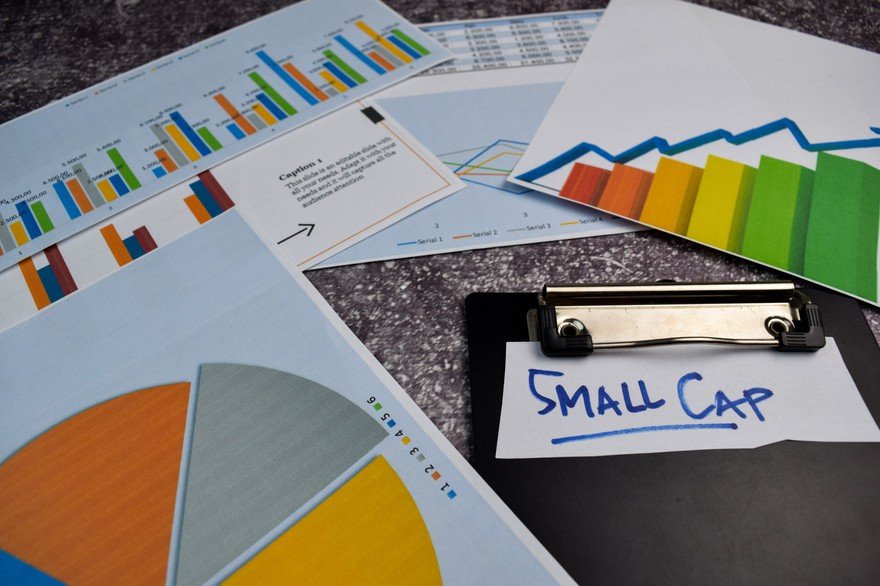What do Apple (AAPL 5.98%), Gilead Sciences (GILD -0.84%), and Tesla (TSLA 0.66%) have in common? At first glance, you might think, "Not much." Their businesses are very different. While they're all big, their sizes also vary significantly.
But there's at least one thing that Apple, Gilead, and Tesla have in common: They all used to be small-cap stocks. Most of the well-known stocks on the market today were small-cap stocks at some point. But exactly how many small-cap stocks are there? The number of small-cap companies fluctuates quite a bit. However, you might be surprised at the number of small-cap stocks.

Current number of small-caps
Total number of small-cap stocks (for now)
The Russell 2000 Index is the most widely known small-cap stock market index. So, are there 2,000 small-cap stocks? Not necessarily. The Russell 2000 includes the 2,000 smallest stocks in the broader Russell 3000 Index, but its holdings actually don't have to be small-cap stocks.
To determine the total number of small-cap stocks, we first have to know what a small-cap stock is. Investors define them in different ways, but small-caps are most commonly defined as stocks with a market cap (the total value of shares held by all shareholders, including company insiders) between $300 million and $2 billion.
In April 2024, there were 1,623 small-cap stocks trading on U.S. stock exchanges using this definition. By the time you read this, the number may have changed again.
Why it changes often
Why the number changes rapidly
There are several reasons the number of small-cap stocks changes rapidly:
1. The market caps of micro-cap stocks increase
Many stocks have smaller market caps than small-cap stocks do. Companies with market caps between $50 million and $300 million are called micro-cap stocks. When their market caps increase enough to top $300 million, they move into the small-cap category. It often doesn't take a very big jump for micro-cap stocks to become small-cap stocks.
2. The market caps of mid-cap stocks decrease
The number of small-cap stocks can also grow when the market caps of larger stocks decline. Companies with market caps between $2 billion and $10 billion are known as mid-cap stocks. When the market caps of these companies fall below $2 billion, they slip into the small-cap category. As you might expect, there can be several stocks on the bubble between mid-cap and small-cap at any given time.
3. Companies conduct initial public offerings (IPOs)
An initial public offering (IPO) is the process used by private companies to sell shares to outside investors. In many cases, the market caps of these companies at their IPO qualify them as small-cap stocks.
4. Small-cap companies are acquired or merged with other companies
Mergers and acquisitions are relatively common in the business world. When a small-cap company is bought by, or merges with, another company, the number of small-cap stocks decreases.
5. Small-cap companies go private
Sometimes, small-cap companies that are publicly traded opt to become privately held. This doesn't happen very often, but when it does, the number of small-cap stocks is reduced.
Mergers and acquisitions
Mergers and acquisitions
As previously mentioned, mergers and acquisitions (M&A) occur somewhat frequently with small-cap stocks. Some sectors tend to have more M&A activity than others.
Mergers and Acquisitions
For example, large drugmakers often target small biotech outfits. The big pharmaceutical companies usually have significant cash stockpiles they can use to fund acquisitions. They also rely on new drugs to fuel growth. Sometimes the most promising candidates are in the pipelines of smaller companies that become acquisition targets.
In 2021, three such pharmaceutical acquisitions were announced. French drugmaker Sanofi (SNY -0.91%) completed its buyout of Translate Bio in September for $3.2 billion. Translate Bio's market cap was in the small-cap range throughout much of the year prior to the news of the Sanofi acquisition.
In November 2021, Novo Nordisk (NVO -0.78%) announced plans to acquire Dicerna Pharmaceuticals (NASDAQ:DRNA) for $3.3 billion. Dicerna's market cap was well below the $2 billion threshold for small-cap stocks in the months leading up to the announcement.
Sometimes, M&A transactions result in a new small-cap stock replacing another small-cap stock. Several special purpose acquisition companies (SPACs) merged with other companies to take them public in 2021.
For example, Evolv Technology (EVLV -0.77%), a weapons-detection security screening company, merged with NewHold Investment Corp in July 2021. Vehicle data company Wejo (NASDAQ:WEJO) wrapped up its merger with Virtuoso Acquisition Corp. in November. Digital media outlet BuzzFeed (BZFD 5.93%) closed its merger with 890 Fifth Avenue Partners in December.
Related investing topics
Why market cap matters
Why market cap matters
Is market cap really important? Does it matter if a stock is a small-cap or not? Actually, yes. The following table shows annualized returns for stocks between June 1927 and May 2023.
| Market Capitalization | Annualized Return |
|---|---|
| Large-cap stocks | 10.1% |
| Small-cap stocks | 13.1% |
Small-cap stocks tend to handily outperform large-cap stocks over the long term. The trade-off, though, is that they can be more volatile.
Stocks that can generate high annualized returns probably won't remain small-caps forever. And one of them might even become the next Apple, Gilead Sciences, or Tesla.
FAQ
Small-cap stocks: FAQ
What percentage of the stock market is small-cap?
As of April 2024, small-cap stocks comprised roughly 17% of all stocks trading on U.S. stock exchanges.
Do small caps outperform the market?
Small-cap stocks have historically outperformed large-cap stocks over the long term. However, small-cap stocks can underperform the market at times.
Is it worth investing in small caps?
Small-cap stocks can be a great addition to many investors' portfolios. However, risk-averse investors will probably want to limit exposure to small-cap stocks because of their volatility.













